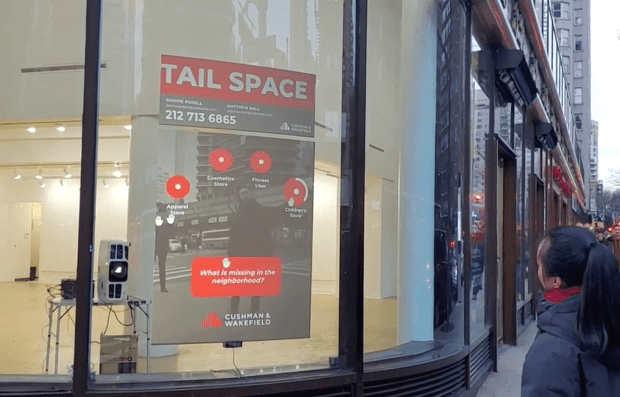Retail’s Next Act: The Connected Window Shopper

Consumers are individuals and want to be treated that way, but the brick-and-mortar experience was not always personalized. There was a time when consumers would visit retailers that offered one-size-fits-all options. Even with advances in technology, physical stores still lag behind in offering personalization, gamification and other kinds of data-driven experiences.
Personalization is a key element of making the retail experience “more relevant and interesting,” Omer Golan, founder and CEO of Outernets, told PYMNTS in an interview. While personalization more often relates to eCommerce, digital-focused firms like Outernets aim to bring the concept to life in physical store locations.
The company converts static walls, glass and displays into interactive, customizable digital experiences. Because Outernets doesn’t know the name of the customer who is looking at a display from outside the store, it doesn’t personalize the content to each individual shopper. Instead, based on a general profile about the consumer – his or her behavior, mood, belongings, preferred brands or location – the company aims to display products through what Golan calls contextualization.
“We offer a platform that increases customer loyalty” and “increases their level of engagement and intent,” Golan said. He believes the concept of contextualization and personalization in physical retail should offer a more relevant, interesting and convenient experience.
At the simplest level, the window ad would show men’s clothes if a man passes by the store. Conversely, the display would change to show women’s attire if a woman is looking at the screen. It might recognize that a customer is male, 35 years old and passing by a particular location, and then choose content based on what would best appeal to him.
Taking the concept a step further, with the use of artificial intelligence (AI), Golan said, “We can be more spontaneous.” If the technology detects a couple walking by the store, for example, it could offer a two-for-one promotion. And if it determines a family is passing by, the display could show a discount on a family pack.
Beyond creating displays in brick-and-mortar store, the company aims to apply its technology in other use cases. With vacant commercial real estate, where a landlord is, say, losing $100,000 a month in potential rent, Outernets can create an interactive survey that asks people on the sidewalk what they would like to see in the space. A local resident might have an opinion if the store is located in his neighborhood.
“We learn that people really do care and they vote – they raise their hands, and they choose, and they come back again and again,” Golan said.
Their input could help make tenant selection faster, easier and more precise. In addition, the technology provides landlords with opportunities for virtual commerce. For example, a landlord might have a virtual tenant who doesn’t have inventory or staffing at the location, but uses the technology to sell to customers 24/7. This would enable the landlord to generate revenue, while allowing the virtual tenant to benefit from a prime location without the overhead of a pop-up or brick-and-mortar store.
Outernets describes itself as an engagement monetization platform. “We help brands monetize their user interactions,” Golan explained. Using a camera and a computer connected to a display, the setup can understand the scene in front of the store and respond in real-time by showing personalized content.
The technology also provides more control to consumers. The camera understands not only who is standing in front of the store, but also detects her body language, facial expressions, hand gestures, motions and items she is carrying. “All of that gives a lot of agency to customers and gives them [a] means to control the display,” Golan noted.
As the consumer passes by, the display has the capability to inform him that the store has something special for him. It might ask the consumer to smile if he wants to learn more, or could request that a consumer wave to have a virtual salesperson provide more information about a product. The consumer doesn’t have to get out his phone or touch anything to interact with the display.
Although Outernets focuses mostly on transactions, the devices are also educational, enabling the firm to teach a shopper about a brand’s value proposition. The experience can also be social, depending on the kind of outcome the brand seeks. It can also combine all three elements – transactional, educational and social – as the company uses a simple flow of attracting attention, creating a conversation and then delivering a call to action.
The company’s interactive displays come at a time when consumers are buying experiences in addition to products. Golan believes stores will be “focused more on how customers can experience the product rather than [just being] the fulfillment center that gets the product into their hands.”
As solutions like Outernet’s platform show, the future of personalization in brick-and-mortar retail could lie in delivering customized, unique experiences to shoppers.